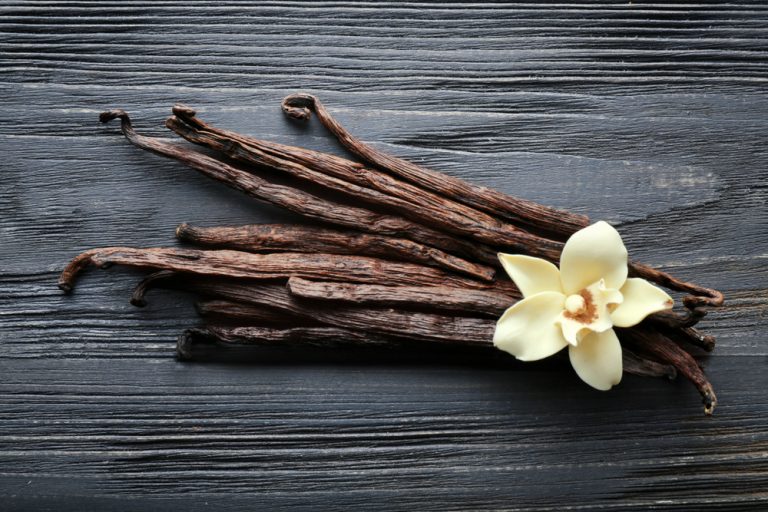Vanilla is one of the most expensive spices in the world. Its high price is due to origin and properties. Vanilla gives a unique and unique taste and aroma, which is why it is widely used in the kitchen. Check what other properties vanilla and vanilla oil obtained from it have.
What is vanilla?
Flat-leaved vanilla (Vanilla planifolia) is a spice that has numerous properties, thanks to which it is used not only in the kitchen. Vanilla has a unique, deep, inimitable flavour and an intense but pleasant aroma.
However, it only gives it after it breaks, when it is fermented and dried. Fresh vanilla is odourless. After the fermentation and drying process is completed, the vanilla pods not only smell beautiful but also acquire a dark colour with a delicate white vanillin coating. It is vanillin that is responsible for the characteristic flavour and aroma of vanilla.
Vanilla - health properties
Vanilla will help with nervous tension and stress. Many researchers claim that the smell of vanilla can evoke positive feelings in people. Spraying it in e.g. waiting rooms or clinics could alleviate patients’ fear and reduce their reluctance towards medical staff.
Also, vanilla will help people who have sleep problems. Just sprinkle the corner of the pillow with vanilla oil to let it help you in falling asleep. You can also use vanilla oil to aromatize the air (in lamps, aroma fireplaces, air humidifiers).
In addition, inhaling the aroma of vanilla inhibits the activity of the centres in the brain responsible for eating stress. So if you eat sweets or crisps under stress, use vanilla to flavour your dishes.
Vanilla can help treat sickle cell anaemia
Sickle cell anaemia is a genetically determined disease in which red blood cells are deformed, which tend to clump together and form blockages in the vessels.
According to specialists from the Children’s Hospital in Philadelphia, vanillin - a compound responsible for the taste and smell of vanilla - can protect the red blood cells from changing the shape. However, this effect of vanillin was only observed in test tubes.
In the human body, it is broken down by digestive enzymes and does not reach the bloodstream. Consequently, a team of American scientists began research using a chemically modified variant of vanillin that is resistant to digestive enzymes.
The compound has been designed so that it changes into active vanillin in the body of humans and animals. The first attempts on rodents suffering from sickle cell anaemia were successful - most of the synthetic compound was converted into vanillin in their bodies, which prevented deformation of the red blood cells.






